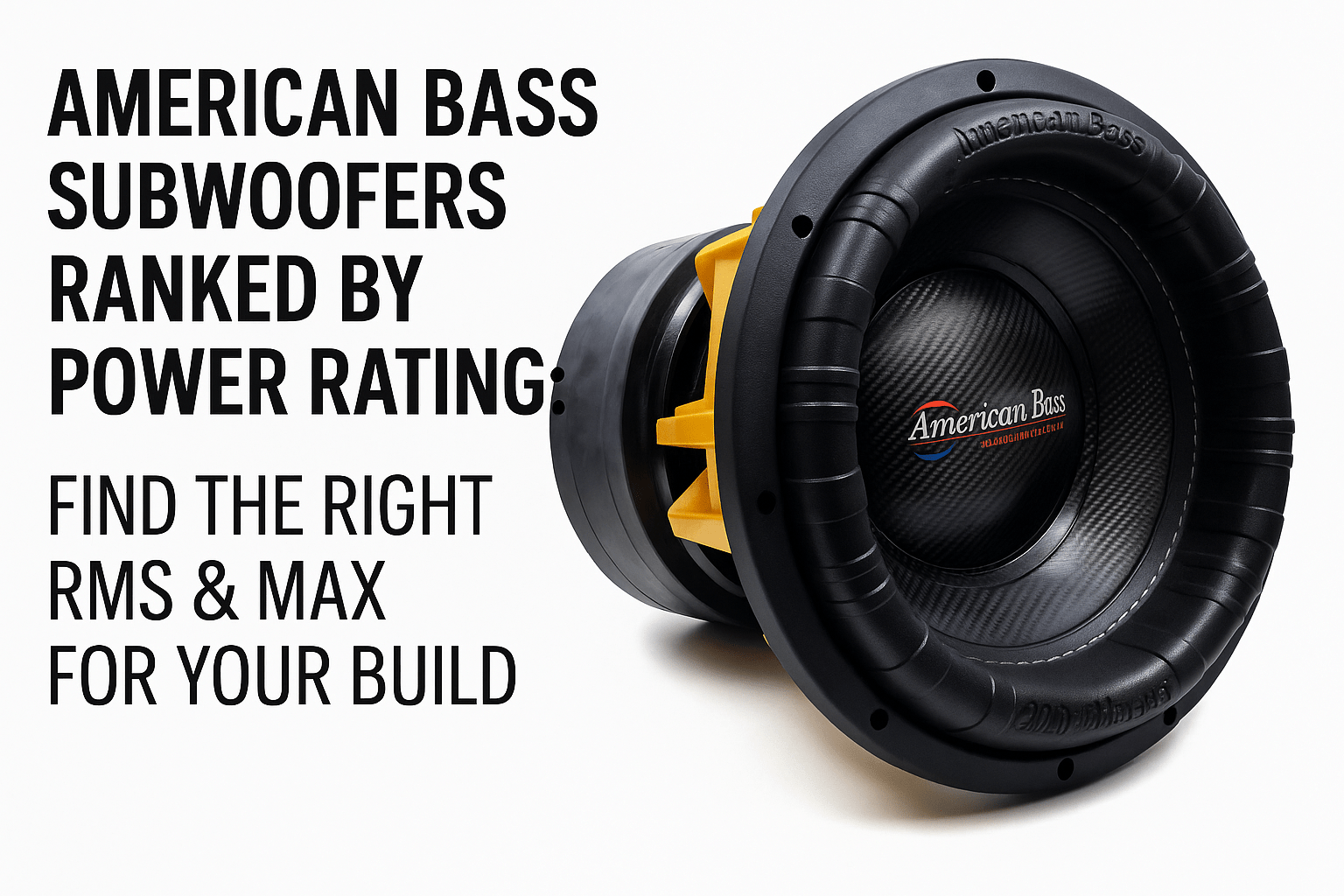The trick to getting the best performance from your audio system is to evenly match your subwoofer and amplifier. Figuring out how to do this is a bit like solving a crossword puzzle. The impedance of a subwoofer is measured in ohms, which illustrates the power that the amplifier will read through the output. The amp will deliver different amounts of watts RMS power based on the impedance load.
To match the two, you'll need to compare the amplifier's RMS power rating to the continuous power handling of the subwoofer. The amplifier needs to be stable at the final impedance of the sub. In general, you'll be looking for an amp with an RMS power output between 80% and 120% of the subwoofer's RMS power rating. This allows you to get maximum power without distortion.
3 Common Scenarios for Matching Your Subwoofer and Amplifier
There are three possible scenarios where you'd need to match your subwoofer and amplifier for top performance.
Scenario 1 - You have a sub or subs, but you need an amp to match.
Scenario 2 - You have an amp, but now you need a sub or subs.
Scenario 3 - You don't have either item, and need help in getting some that match.
Scenario 1: You Have Subwoofers, but Need a Matching Amplifier
Let's start with the first scenario. You already have a subwoofer or two, and you need an amplifier to match that will deliver maximum bass. Firstly, if you have more than one sub, they must be the same coil type and impedance. If they aren't, then you won't get even power between them. One sub might be overpowered, while the other might get less power.
Start by looking at the watts RMS rating of the subwoofers. Multiply the number of subs you have by that rating to get a total. The amp you choose shouldn't supply more than the total RMS rating of the subs. For example, if you have two subs rated at 300W RMS, you'll need an amp that can provide 600W RMS output.
If you only have one sub, then you'll match the amp's RMS output to the sub's RMS rating. Aim to find an amp that can provide between 80 and 120% of the sub's RMS rating.
Matching Impedance
Impedance is measured in ohms and represents the resistance to the current flow. The impedance of your subwoofers depends on how they're wired together. It's important to ensure that your amplifier will be stable with the final impedance of your subs together. You may need to check sub wiring diagrams to see the various combinations of subs and impedance. The key is to get an amplifier that can put out the RMS watts mentioned above and the impedance load your subwoofers are wired to.
When wiring two single voice coil (SVC) 4-ohm subwoofers, a parallel connection results in a 2-ohm final impedance, while a series connection gives you an 8-ohm load.
Scenario 2: You Have an Amplifier, but Need Subwoofers
Let's look at how you would match an amplifier that you already have with subwoofers. First, find the RMS rating of the amp at different loads. Second, decide on the power you'd like to achieve.
The next step is to divide the power number by how many subs you want. That number is the target RMS for the subs you choose. Here's an example. Let's say you have an amp rated at 250 watts RMS x 1 at 4 ohms and 500 watts RMS x 1 at 2 ohms. If you want your system to put out 500 watts RMS, you'll need to have subs wired at an impedance of 2 ohms. If you have two subs on the amp above, each one should be about 250 watts RMS.
In other words, in this example, you would look for subs that are each rated for at least 250 watts RMS.
Scenario 3: You Need Help Choosing Both an Amplifier and Subwoofers
Subwoofers sound best when used with an amplifier that provides the proper amount of power. Size differences are more likely to change frequency response and tonal quality, rather than pure power and performance. The goal of matching subs and amps is to get that maximum performance.
In general, you'll probably want to start with what type of receiver is already in your vehicle, unless you plan to build from the ground up. If you have a factory radio, you generally won't need more than 50 to 200 watts RMS for the bass. If you have or plan to get an aftermarket receiver, you'll probably want between 200 and 300 watts RMS.
American Bass is ready to help. You can chat with our experts at any time.
Pro Tip: Choose Your Subwoofers First
Even though we gave two scenarios above, it's usually better to choose your subwoofers first before choosing an amplifier. This allows you first to determine the power requirements for your system, which you can then match with an amp. The amp should provide enough power to match the subs without being overpowered or underpowered.
Another reason to choose subs first is that the subs' performance is directly related to the power they get from the amp. Picking subs first gives you a target power number to work with, plus the impedance that you need the amp to provide.
Ultimately, you want to consider the whole audio system and the power that the amp needs to provide, but when it comes to choosing an amplifier or a subwoofer first, it's better to choose the subwoofer.
Get started on your car audio journey today by shopping American Bass's exclusive collection of subwoofers and amplifiers. Looking for the perfect audio combo? Our bundle deals make it easy with subwoofers and amplifiers that work great together. We feature top brands like American Bass, VFL Audio, and Stealth Energy. We also sell speakers and the wires and accessories you need to build your audio system and take it to the next level.



